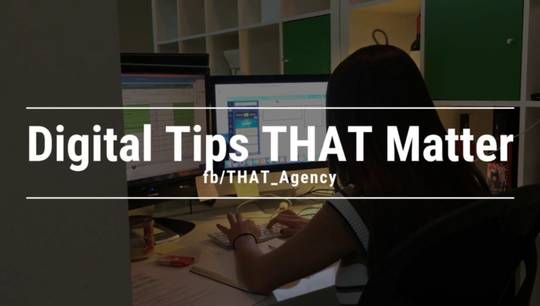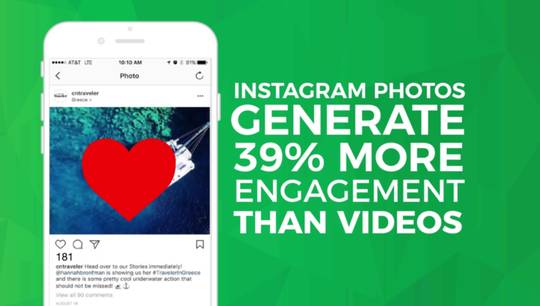5 Steps to Measuring Social Media ROI
First, we should be very clear on one thing. ROI doesn’t have to be financial. Of course, we all want to make trillions of dollars selling our products and services on social media. However, given the complexity of attribution modeling with social media, we often don’t get a linear picture of how people are interacting with ads from awareness to purchase. Therefore, ROI can absolutely be anything that is important to your brand, whether it’s awareness metrics, engagement metrics, conversions or revenue.
Let’s jump in!
1. Identify Your Key Performance Indicators (KPIs)
As I said before, ROI doesn’t necessarily have to be dollars and cents. To begin to measure social media ROI, your organization must strictly define what metrics are most important to you. These Key Performance Indicators (KPIs) will help you keep your focus on how you should be aligning your social media efforts and strategy. By clearly defining exactly what you are going to judge your performance by, you save yourself from getting distracted from metrics that are irrelevant to what you are hoping to accomplish with your strategy. For instance, if awareness is the goal of your social media strategy, you will want to include impressions and engagements as KPIs. If sales are what you want to focus on, you will want to include revenue and conversions. One misstep that many brands make is judging social media success strictly by conversions or sales. Given the nature of user behavior, people rarely see a social post, click a link and buy immediately. Users interact with multiple stimuli on the path to purchase, so it’s important to strictly define your KPIs so you can get a holistic view of how your social media efforts are helping to build your brand.
2. Build Your Social Media Strategy with Your Business Objectives in Mind
Once you have your KPIs identified, it is important for you to build a social media strategy aligned with your business goals. If you decide that you want to leverage social media channels to help build awareness for your brand, you will want to create a value-based content strategy supported by social advertising that is optimized to get as many impressions as possible. Facebook, Twitter, Instagram and Twitter have social advertising units that can help you achieve almost any purpose, so make sure you choose the correct one. For instance, if your goal is website visits, you won’t want to boost posts using engagement optimization. This means Facebook will show your content to people who are more likely to engage with it, not necessarily click your links. There are a lot of pitfalls here to be careful with, but as long as your social media efforts and strategy are built with your business objectives in mind, you should be one step closer to measuring social media ROI.
3. Leverage Google Analytics and Social Pixels
Now that you have your KPIs in order AND you have built a social strategy that aligns with your business goals, it’s time to make sure you can track website activity from social media sites. First, it’s highly recommended that you leverage the Facebook Pixel. This little snippet of code will help you better understand the demographics of those who visit your website and will provide you with different attribution models that otherwise wouldn’t be available. With the Facebook Pixel, you can see the number of users who converted after viewing your ad, even if they didn’t click on it. This is HUGE. While view-through attribution can be a little confusing, it helps you to better track all your Facebook Ads. (Also, the Facebook Pixel allows for remarketing, but we will talk about those in another blog.) Next, make sure that you have Google Analytics set up on your website and that you are leveraging UTM codes. These spiffy custom URLS allow you to track the activity of users that come to your website from a specific post or ad. You can get as granular as you would like! UTMs are a great way to begin assigning value to your social media efforts.
4. Build a Reporting Dashboard
With all the data that is created by your social media efforts, it’s inexcusable not to measure the impact of your activities. By using a reporting dashboard, you can view your performance month over month for the KPIs that are most important to your brand. Many brands tend to look at each month in a vacuum; however, it is important to see trends over a long period of time opposed to what the data looks like from month to month. Now, when I say “build a reporting dashboard,” I don’t mean you need to invest a ton of money in a custom solution. You can leverage tools like Google Analytics, Sprout Social and HubSpot to blend reports together, so you can create a dynamic view of your digital activity. This is where the reporting becomes very important, as you will want to look for both correlation and causation to piece together the story behind the data. This means understanding which social advertising campaigns are generating the most traffic to your site, at what cost and if that traffic is converting. The goal is to create a clear flow of what users do from when they are first served content to when they leave your website. THIS is where you can start to see the maturation of measuring social media ROI. Measure, measure, measure!
5. Remember the Contradiction
I am going to contradict myself a bit here. While you can measure social media ROI in a lot of ways, you have to remember that you are almost always measuring the worst-case scenario. For instance, Google Analytics only reports conversions for social media if they happen immediately after the click. Therefore, if you are running a campaign and someone doesn’t convert immediately after clicking your ad, but then comes back later through a different digital channel, you won’t get credit. Many brands scoff at social media, because it seldom generates the direct conversions that other channels like PPC does. You must always remember realistic user behavior as it pertains to your social media efforts and view the data accordingly. A HubSpot study shows that 80% of consumers are out in the digital ecosystem researching products and services and only 20% of users are ready to buy at any given time. A vast majority of people aren’t ready to buy when they come across your social advertisements. Keep this in mind!
Measuring social media ROI is really tricky, but not impossible. As long as you are realistic about the data and the process by which you can measure social media ROI, you can get a clear idea of what your social media efforts are producing for your brand!
Contact THAT Agency - https://bit.ly/2xDGKQJ
Don't Forget To Find Us On Your Social Channels:
Facebook - https://www.facebook.com/thatagency/
Twitter - https://twitter.com/THAT_Agency
LinkedIn - https://www.linkedin.com/company/that...





